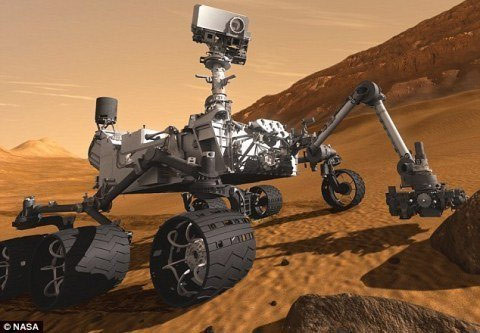Life on Mars soon to be found?
NASA's Curiosity rover won't have to drill too deep to find evidence of life on Mars when it lands on the red planet next August.
Just a few centimeters below the surface of Mars, we can detect organic molecules – a sign that life may exist on the red planet, according to a research team led by Dr. Alexander Pavlov of NASA's Goddard Space Flight Center.
Scientists believe that organic compounds may exist below the surface in newly formed craters on Mars after meteorite impacts. These organic compounds, made up of 10 or more carbon atoms, could help create the basic building blocks of life such as amino acids and proteins.
This means that life on Mars could be discovered next August when the Curiosity rover lands on the red planet. The mission of the Curiosity rover is to drill down to about 10cm below the surface to search for suitable compounds for life to develop.

NASA's Curiosity rover could detect signs of life on Mars next month
“The challenge is that previous Mars probes have not found any organic matter on the Red Planet,” Dr Alexander Pavlov told the Daily Mail. “We know organic molecules exist on Mars, but we have not been able to find them in the surface rocks.”
Unlike previous probes, the Curiosity rover carries equipment to drill and take samples of soil and rock under and on the surface of Mars and transfer them to the analysis and testing room right inside the body of this probe. The analysis results will show whether the conditions on Mars are suitable for bacteria to live or not and search for signs of life on the red planet in the past.
The Curiosity rover is expected to land near the foot of the mountain in the 3.5 billion-year-old Gale Crater on August 6. The mountain’s geological layers are believed to contain minerals formed in water.
According to Tinnhanh-M






